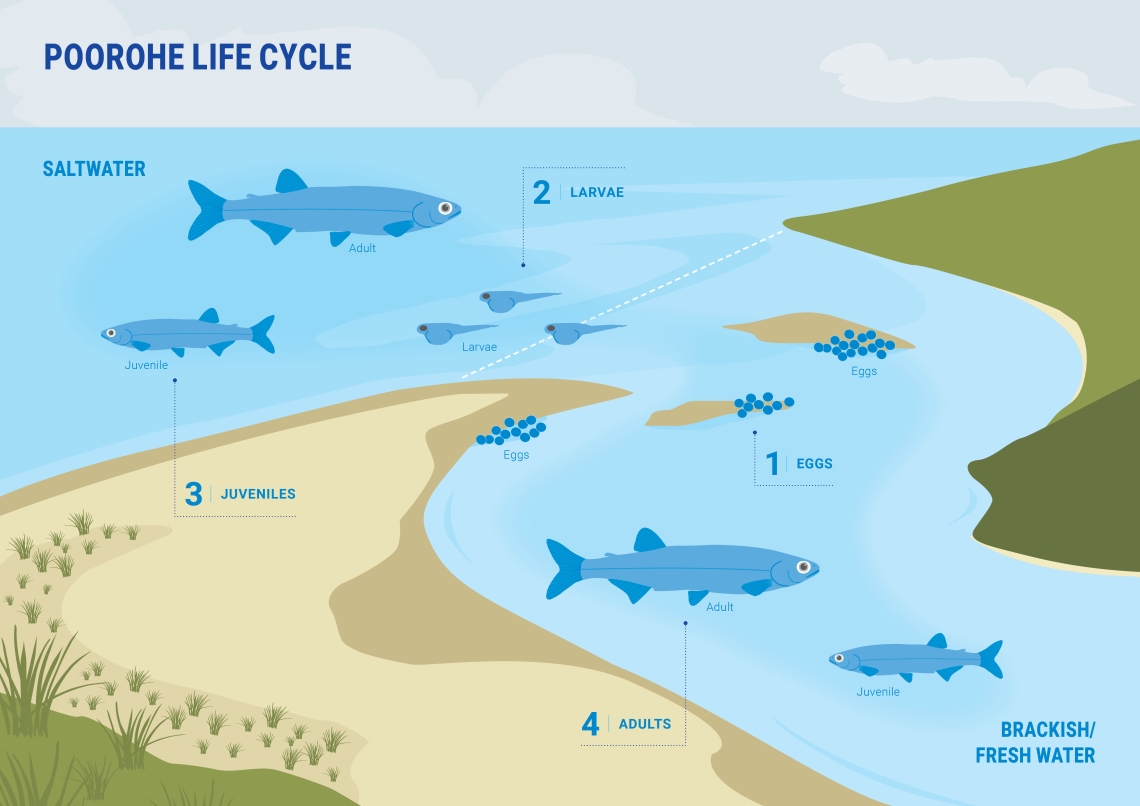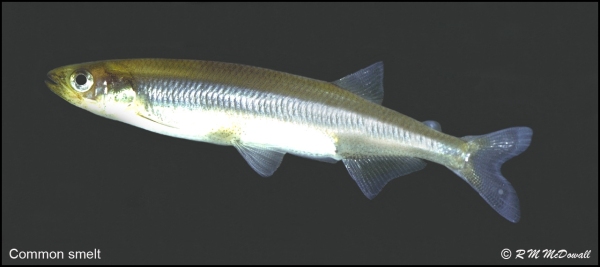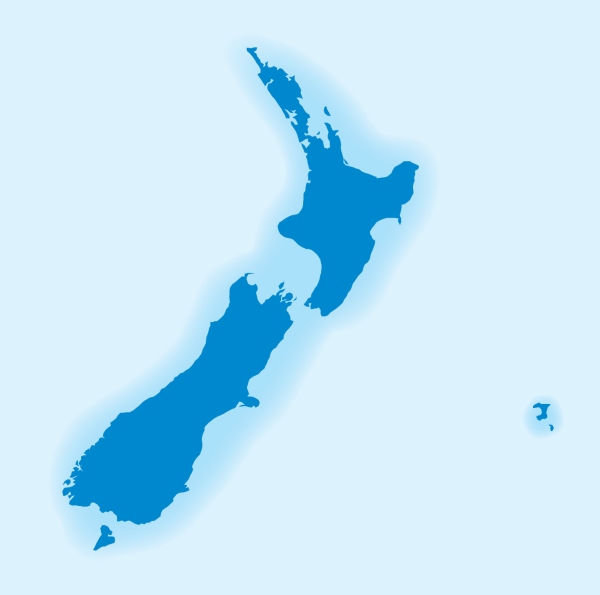On this page
Click button below to view other species in series
Poorohe Life Cycle
Poorohe (common smelt) is important to the Te Puuaha community in the lower Waikato River where they are also known as ‘number two whitebait’. This species has scales, a distinctly forked tail, and is well known for their cucumber-like smell. In Aotearoa-New Zealand smelt can have either a diadromous (riverine/sea-going) or non-diadromous (associated with lakes) life cycle. Only common smelt (Retropinna retropinna) are found in the Waikato River. Very little is known about the life cycle needs of poorohe in the lower Waikato River.
Eggs
Poorohe spawn thousands of eggs approximately 1 mm in size. The eggs have large yolk sacs that can sustain the larvae for as long as 10 days.
Larvae
The larval period of the poorohe life cycle is largely unknown. After hatching in freshwater, the larvae (about 5 mm long) drift out to sea where they will continue to grow and mature.
Juveniles
Juveniles are translucent and have a whitebait-like appearance. It is thought that some juveniles mature in the marine environment and come back to the river as adults, while other juveniles migrate upstream in spring/summer and mature within the river system.
Adults
After spending time at sea or within the river system, adults move to the lower river to breed. Mature poorohe range between 90–100 mm in length and are approximately a year old. During late autumn and early winter, mature adults will spawn along sandbanks and sandy shoals in the lower Waikato River. It is thought that after spawning, the spent poorohe die; however, some may survive spawning and spawn again the following year.
Poorohe Species
Two species of smelt are found in Aotearoa-New Zealand
Where are they found?
The common smelt is widespread throughout Aotearoa-New Zealand including Rakiura and Rekohu/Wharekauri.




